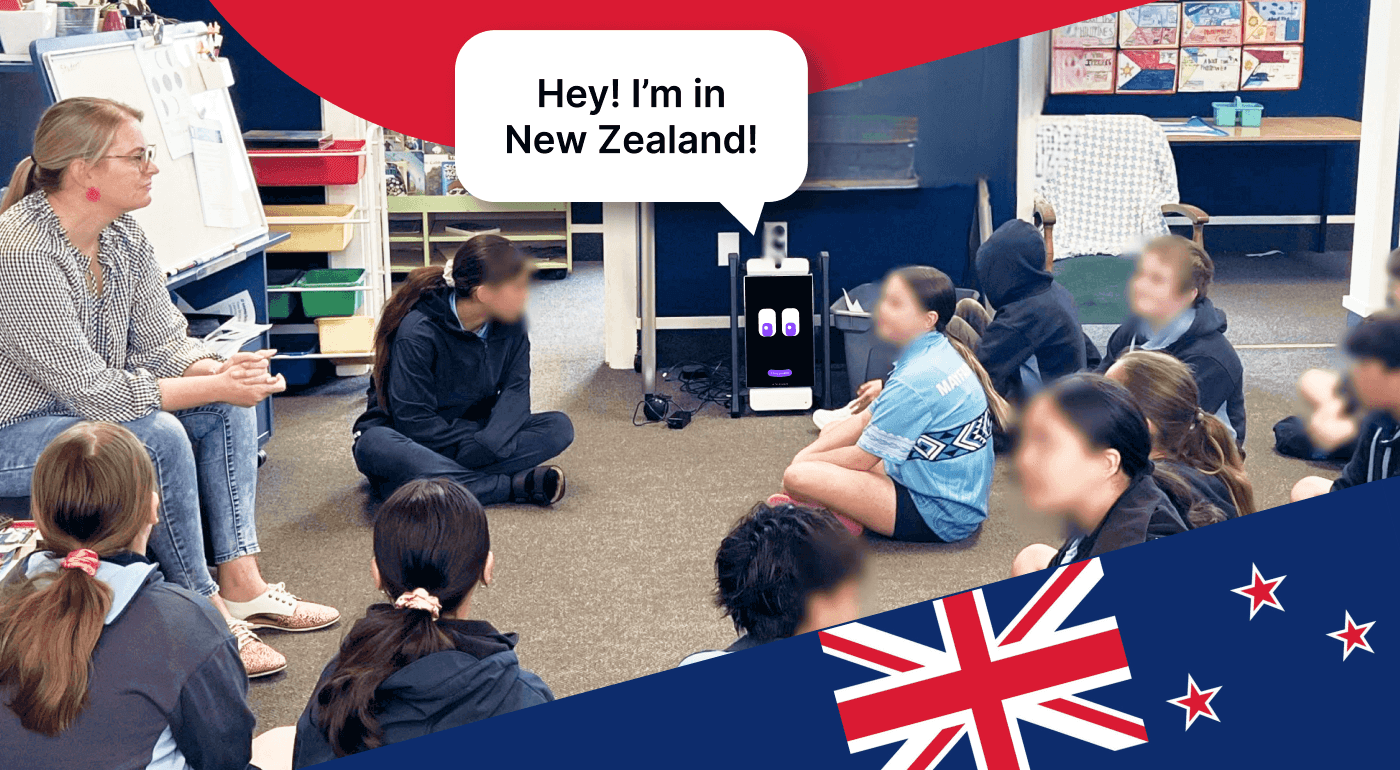
Across New Zealand, a group of teachers and leaders are exploring what it means to bring AI into classrooms in a way that reflects their own values, languages, and ways of working. The result is something distinctly Aotearoa: thoughtful, grounded innovation with people – not technology – at the center. This approach is meant to lead to stronger teaching practices and more meaningful learning experiences for students.
“It’s not about replacing anything we do.”
At Mountain View School in Mangere Bridge, Principal Ben Hutchings has been using M2 for over half a year. What began as curiosity has turned into a quiet transformation of how his staff learn.
“It’s not about replacing anything we do,” Ben explained. “It’s an add-on. It helps us see what’s really happening, and make it better.”
His focus now is on tracing M2’s influence all the way to student outcomes. If teacher practice is improving, are students learning more deeply? It’s early days, but the signs are promising. “You can feel the shift in how teachers talk about their teaching,” he said.
“AI has to sound like us.”
At Mayfair Primary School, Principal Foxy is thinking about culture and authenticity. His community includes many Māori and Pacific learners, and he’s paying close attention to how M2 handles language and voice. “AI has to sound like us,” he said. “The pronunciation of Māori words in our school values — it’s actually getting pretty good. That matters.”
For him, cultural integrity isn’t an optional feature. It’s the test of whether AI belongs in a New Zealand classroom at all.
That line – delivered with a grin – got a laugh from everyone who’s ever tried to have an honest teaching conversation in front of leadership.
Foxy’s point here was simple: teachers need safe spaces to learn from one another without the feeling of being evaluated. Tools like M2 help make that possible. M2 listens without judgment, offering neutral feedback that belongs to the teacher, not to an observer with a clipboard.
As Michael Harvey, a secondary teacher at Marlborough Boys College, put it: “It’s not about tick-boxes. Teachers can decide what kind of feedback they want. It’s low-pressure, and that’s what makes it powerful.”
“Our kaiako need the same kind of feedback athletes get.”
Rachael Coll, Principal of Waihi Beach School, has been thinking about reflection through a different lens — the performance mindset common in sports. “Athletes are always chasing feedback to improve,” she said. “But for kaiako, it’s easy to say, ‘I’m fine, it’s working.’ I want M2 to be that neutral, non-biased person in the room that helps us keep growing.”
Her school is also exploring how M2 might support student behavioral data collection — a time-consuming process teachers often can’t capture accurately in the moment. “If we can get authentic data without changing the environment,” she added, “that changes everything.”
“Our kids should see themselves in the tool.”
Ben’s team has also been helping to shape M2’s customization features — experimenting with how teachers can select specific focus areas or question types for feedback. “The goal,” he said, “is for our kids and teachers to see themselves in the tool.”
That idea – personalization rooted in local identity – is becoming a hallmark of New Zealand’s approach to educational AI.
Michael Absolum, founder of Evaluation Associates, has been a quiet connector behind much of this work. He describes this phase as a discovery process: “They’re figuring out what works — and doing it faster than most. What’s special is how they’re linking pedagogy, policy, and community all at once.”
He sees early adopters like Ben, Rachael, and Foxy as trailblazers who are helping define what responsible AI looks like in New Zealand schools.
Building something local
This movement is defined by collaboration and trust, not competition or compliance. Principals are sharing policy templates and privacy frameworks, teachers are sharing classroom hacks, and everyone seems to be asking the same question: How can we make this work for our learners, our language, our values? It’s a model of innovation that feels deeply human. Instead of asking how AI can make teaching easier, these educators are asking how it can make learning richer, more inclusive, and more connected to who they are.
“As long as we’re staying true to our values,” Foxy said, “we’ll find the way forward.” And they are.